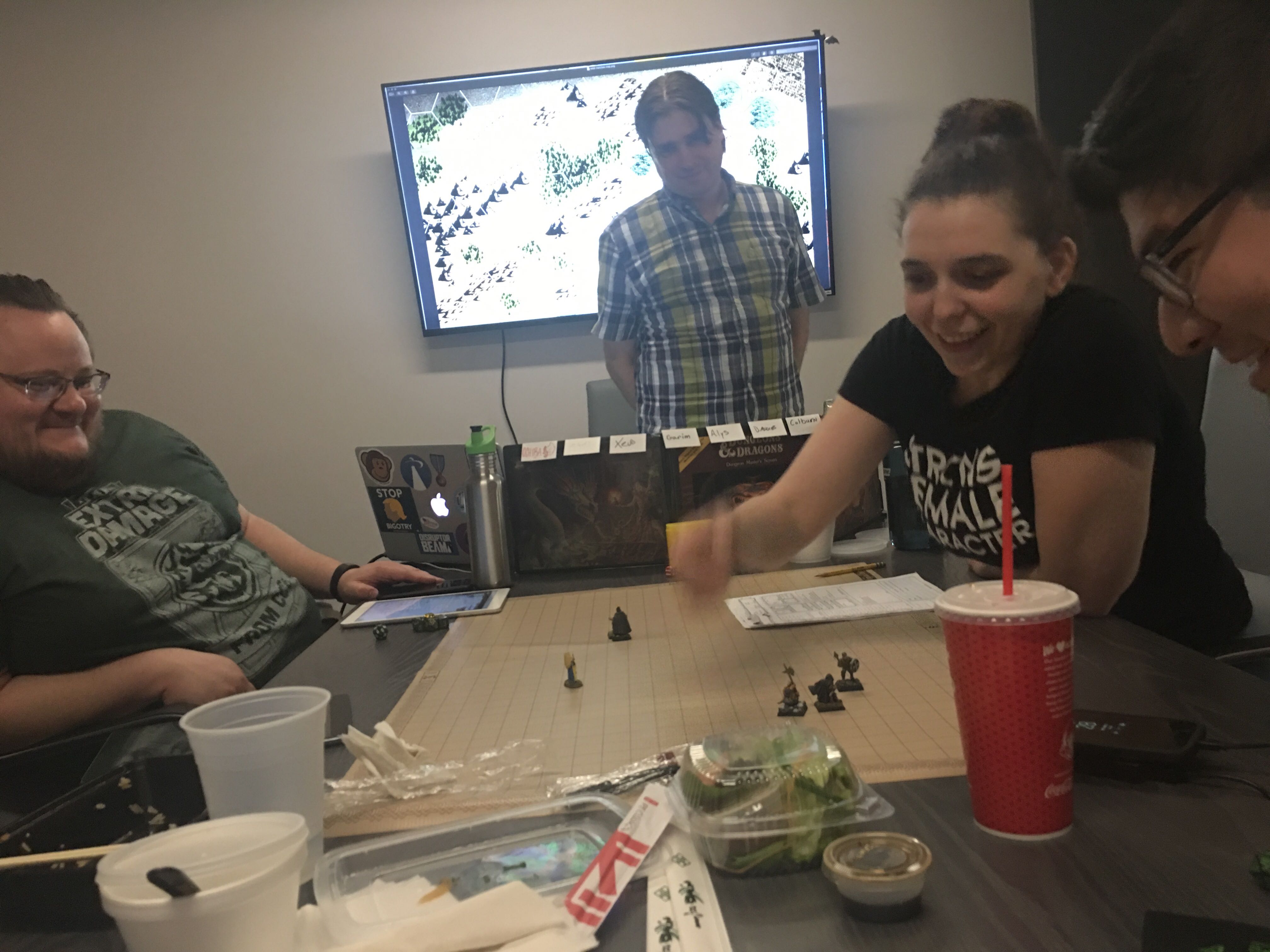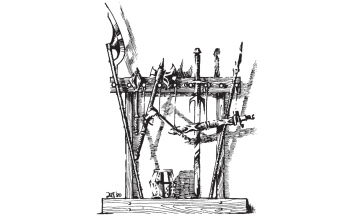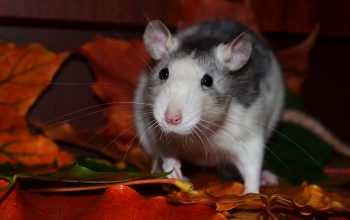
We played our first West Marches game last Wednesday, and I think it went reasonably well. It was my second attempt at running 5th edition, and the first time I had played any game with most of these players. One of the interesting things about running West Marches I think will be the varying composition of the group in terms of roleplay experience. We had old school grognards, well versed 5e players, and some complete neophytes to the hobby at large.
One thing that really threw me was when one player asked at the start “how much RP should we do?” Thankfully I had watched some Critical Role and was not thrown by the casual use of the acronym, but I still had no idea this was an optional component of the game. To me, it felt like someone sitting down to a poker table and asking “how much gambling should we do?”
I suppose some folks must play it more like a tactical board game? I’ve never personally seen that, though now I wonder if maybe I have and simply incorrectly identified this style of play as lack-luster DMing. Ultimately, I answered the question with a surprised “Um, lots? Yes, lots.”
Another interesting comment came up during character creation when I had I to veto someone’s character when they used some weird optional cat-person race. One of the problems with D&D Beyond is that it’s not always clear where certain options are coming from. Partially I didn’t want the cat-person because of my general dislike of weirdo races, but also because I know I’m going to be asked to know how a lot of abilities work. It would be nice to know that I can just study the Player’s Handbook and have reasonable coverage on how various characters are supposed to work.
The player in question is a good friend and long-time roleplayer, so it wasn’t contentious at all. The comment that really intrigued me though was “Oh, I wasn’t sure how silly this game was going to be.” Humor level in your D&D game is actually a fascinating topic as I turn it over in my head. Yeah, I could see that playing a cat person could in fact be hilarious — anyone that’s seen Will Ferrell’s SNL audition can attest to that. But it’s a bit over the top for what I want in my game, which is odd to say, because I definitely do like humor in my games.
With a little thought, the best I could come up with was that I’d like a “Jack Vance” level of humor in the game. L. Sprague de Camp or some Terry Pratchett probably work as well. I immediately think of stuff like The Fallible Fiend or The Eyes of the Overworld. I think books like this tickle me by finding very funny situations in settings that are otherwise taken fairly seriously. Maybe the problem is how dated my references are. Are there any modern authors writing stuff like this?
Well, regardless, the West Marches game is off to a good start. However I think the next step is the hardest – what we really need is to see some chatter about the game to kick-start that motivational feedback loop. I’ll be eagerly watching our group chat to see what happens.



On humor: Around the release of 3E I think I saw a comment by C. Peterson (?) saying his theory was that humor should arise spontaneously from the action at the table — if the players want that — and not be written/scripted into the material ahead of time. That really rang true for me, in contrast with some of my least favorite 90’s stuff that attempted to script humor.
My top example would be Fafhrd & the Gray Mouser. The surface features of most of the world are almost purely mundane (only normal people in the city, etc.). Then playing off that, they can act unreasonably skeptical of supernatural elements when they arise to great effect. This tonal flexibility would be spoiled if you had a weirdo race member standing in their presence full-time.
Related: “Nothing remains interesting if anything can happen.”, H.G. Wells
https://deltasdnd.blogspot.com/2016/10/nothing-remains-interesting-if-anything.html
I would suspect that the How Much RP question was partially around the ” are we expected to fully act out and speak in character and voice at all times?” Some of my newer players seem to worry that is a requirement for D&D.
I am generally happy with “My character would find a polite way to tell this person to get bent” level of RP.
As a guy who adores weirdo races and loves to invent them for campaign material, I’d also like to point out that Elves, Dwarves, and Halflings are also weirdo races that have become more than banal (imho) from the sheer weight of tradition and ubiquity.
An all elf party (or an all dwarf party, although I will always and forever cherish our time as the MacGoohen brothers) is all the more dull to me because all too often they only happen because of the bonus’s and/or multiclassing. If you’re gonna be a weirdo, go for the complete package, don’t just slap on some pointy ears to get a few pluses, immunities, and darkvision. It’s the quintessence of gameism vs. narrativisim in RPGs to me. The who you are doesn’t really mean as much as how the numbers crunch. I loathe the concept of “builds” in a role playing game. Grumble grumble grognard.
Admittedly, the MacGoohens arose because we were trying to maximize our chances at a 3rd. Edition fueled RPGA living dungeon at GenCon, so I can’t claim to be above it, but we actively set out to approach it from a game-ist perspective because of the circumstances.
That being said, I have seen parties full of half-elves taken entirely for the bonus’ on several occasions, with their lineage and culture *never* coming up in actual play. Compare/contrast to the original source material of Tolkien’s Middle Earth where there were all of *two* half-elves in the world. Sure, they knew each other ‘cos they were father & daughter, but by the time Arwen was around Elrond was essentially retired, I doubt they adventured together much.
This is one of the reasons old school race as class still pretty much works for me. I like the idea that being a whole separate class kind of encapsulates the exoticism of the character, they’re a strange and unearthly visitor with a unique perspective to roleplay. It also kind of acts as a hedge against min/maxing in that folks who are thinking purely tactically will seek out wider variety of PC types if they want a well rounded party. Menageries can still happen, but at least it cuts down on the “we’re ALL this same rare and unique thing”.
Pardon my crankiness…
Well, a lot to reply to here, too much probably for the comments section. Perhaps I will work up a separate post on the increased variety of D&D races across editions and how that has impacted the game. But let me at least touch on one thing — my perception of your use of unusual races in campaign material.
I’m certainly well aware that you like to include unique races in your material.
For those following along, see The Thousand Year Sandglass or The Creepy Crawl. The major difference I see between what you do and what’s in the 5e PHB though is context. For your material, I feel like the unusual races are part of the world building. Frankensteinian monster-men with replaceable appendages is decidedly in fiction for a world named “Ghoulardia” based on classic monster movies. The PHB, however, tries hard to shy away from a specific setting, presenting things in a generic way for adaptability between published and home-brew settings alike. As many others have pointed out, D&D is a melange of all things fantasy. “You play Conan, I’ll be Gandalf, and together we’ll go kill Dracula.”
To do this it can only draw on shared tradition for content like race options. Dwarves, elves, and even halflings are not only present in fiction that pre-dates the game, but also draw on a wide range of folklore. In the PHB, dwarves and elves each get two full pages describing the culture and background that is already pretty well ingrained in any fantasy-buff’s head. Sure, specific settings can twist this (I recall a game we played where dwarves reproduced by carving their children out of deep mountain stone), but this is part of adapting the material to your setting, and you have a common base to work from.
Tieflings and dragonborn barely get a couple paragraphs. Dragonborn have something about being clannish? Tieflings are even more vague about where exactly the come from. There’s plenty of text about how rare these races are, and how players should expect to be viewed by local populations with trepidation. But where does that leave us? Should my world include isolated communities of Tieflings? Should human villages grab up pitch-forks and torches when one enters town?
They’re just so un-grounded I have no idea what to do with them, so I tend to either just overlook it or overplay it. Either way as a DM I find this very unsatisfying and would rather just avoid it all together. Personally, I think they would have done better to present them as examples of how to build your own race suited to your custom setting.
I think your point about the pile on of new races kind of exemplifies something I’ve seen as editions have advanced that I’m coining a term for right now: Optionitis.
Ya gotta fill them splat books and supplements with *something*, and also with thousands of hobbyists busily creating away in the gaming infosphere you’re gonna wind up with piles and piles of custom options that as DM you need to analyze and determine whether it’s a good addition or one too many balls to juggle effectively. Classes, spells, monsters, abilities, and yeah, races all suffer from this as the hobby progresses.
I think later editions get so wound up with presenting such a vast and varied smorgasbord of options to entice an increasingly jaded player base that it’s sometimes hard to just whip up a well balanced, satisfying meal, to abuse a metaphor here. I get the same old grognard’s ache in my noggin whenever I read or hear discussions of all the different moving parts that go into 5e play. Consarned whippersnappers.
Man, count me also as an old “Cranky-Pants.” How I’ve really started to loathe all things 5E and what it promotes.
To keep the negativity to a (slight) minimum, I’ll skip the “RP” discussion and just focus on the whole “weirdo race” question. The thing that gets my goat is that it destroys any real sense of coherence about the game world…it becomes impossible to take the setting seriously as a consistent world and instead becomes the table-top equivalent of an MMORPG where we’re just taking whatever character type “looks cool” or has “neat abilities,” divorced from any type of world immersion. ‘We’re just a group of adventurers, yo! Who cares?’ Okay, so why play THIS game instead of Warcraft or Guild Wars or whatever (Fortnite? Is that the new hotness? I don’t play vids anymore)? Why should I (as a DM) take the responsibility of world-building and setting creation seriously when you’re just going to have cat-people and dragon-people and demon-people stomping around with whatever class you want just because it’s kewl? Why should the game not devolve into utter silliness…silliness between the players, silliness between the players and DM? It’s all just nonsensical nonsense in the name of “having fun,” right?
I realize that makes me sound as grumpy and curmudgeonly as some Napoleonic war-gamer arguing over troop formations and the color of pant stripes. What a wet blanket I am! Ah, well. I guess I’ve just gotten to a point where I like to take my fun a little more seriously. I’m happy to mock myself for the ridiculous person I am, but mock my *work* ?! (and world-building and setting design IS a form of work) If my work is worthy of mockery, why the hell should I put the time and effort into it? That’s time and effort better spent elsewhere.
Don’t bring your dragon-people to my table.